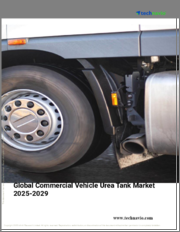
|
시장보고서
상품코드
1408122
인도의 상용차 성장 기회Indian Commercial Vehicle Growth Opportunities |
||||||
대체 파워트레인과 새로운 비즈니스 모델이 변화를 가져옵니다.
인도의 트럭 운송 산업은 다양한 차량, 사업자 및 물류 서비스를 포함하여 경제 성장과 발전의 중요한 원동력이되었습니다. 수년간 축중 규제와 Bharat Stage 6의 배기 가스 규제를 이행한 이래 업계는 COVID-19의 대유행으로 인해 더욱 악화된 수송량의 정체에 직면해 왔습니다. 그러나 현재 업계는 회복·성장 단계에 있습니다. 2022년 트럭 총 출하량은 87만대였습니다. 시장의 최대 점유율은 여전히 소형 트럭 부문이며, 2022년에 판매되는 트럭은 56만대, 그 다음 대형 트럭 부문이 22만대, 중형 트럭 부문이 9만대입니다. 도로 인프라에 초점을 맞춘 Bharatmala와 항구의 현대화에 초점을 맞춘 Sagarmala, 종합적인 국가 물류 정책, 국가 인프라 파이프라인과 같은 매우 중요한 이니셔티브로 개발을위한 지출이 많아 트럭 배치에 대한 수요 를 밀어 올릴 것 같습니다.
디젤 가격 상승에도 불구하고 압축 천연가스(CNG) 트럭 판매는 중형 부문에서 증가하고 있으며, 전체 파워트레인의 27.8%를 차지합니다. CNG 가격 개정이 판매를 밀어줍니다. 액화 천연가스(LNG) 전용 정책은 LNG가 더 긴 항속거리와 디젤과 유사한 성능을 제공하기 때문에 트럭, 특히 대형 부문에서의 LNG 이용을 증가시킬 것으로 보입니다. 선도적인 OEM은 LNG 모델을 프로토타입으로 전시하고 있으며, 2024년 발매가 예상됩니다. 트럭의 전동화는 먼저 소형 트럭으로 시작하여 마지막 마일 오퍼레이션을 목표로 하며 충전 인프라와 취득 비용이 개선되면 다른 부문으로 확장됩니다. 상용차의 전기화는 중앙정부 및 주정부의 보조금에 의해 더욱 강화됩니다. 또한 OEM은 생산 연동 인센티브(PLI)도 제공합니다. 타사 기업 및 OEM을 통한 연결 및 텔레매틱스 솔루션 증가는 고객의 차량 관리를 개선하고 있지만 추가 규제가 예상됩니다. 인도의 상용차 부문의 전반적인 성장 궤도는 계속 견조할 것입니다.
목차
전략적 과제
- 왜 성장이 어려워지고 있는가?
- The Strategic Imperative 8(TM)
- 인도 상용차 산업에 있어서의 전략적 중요 과제 상위 3의 영향
- 성장 기회는 Growth Pipeline Engine(TM)
조사 범위
- 분석 범위
- 제품 및 파워트레인 세분화
- 조사의 목적과 목적
- 본 조사가 답변하는 주요 질문
성장환경
- 인도 경제 활성화를 위한 정부의 중요한 노력
- 인도 상용차 시장을 견인하는 주요 동향
- 트랙 용도의 개요
- 인도화물 운송 카테고리 및 유형
- 인도의 트럭 생태계
- 세계의 상용차 스냅샷, 2022년
- OEM정세, 2023년
- 규제와 정책, 2023-2027년 전망
- 전기자동차(EV) 인센티브와 보조금, 2023년
성장 기회 분석
- 주요 성장 지표
- 예측 기준
- 인도 상용차 시장의 성장 촉진요인
- 인도 상용차 시장의 성장 억제요인
용도 및 섹터 전망
- 트럭 판매 대수 : 용도별
- 택배, 익스프레스, 소포(CEP) 물류
- 내구 소비재, 소매, 전자상거래
- FMCG, 의약품, 서류
- 도로건설 및 부동산
- 계획도로건설
- 과일, 야채, 우유
- 농산물
과거 판매량 실적
- LD 트럭 판매 사이클
- LD트랙 시장 점유율 비교, CY 2018-2022년
- MD 트럭 판매 사이클
- MD트랙 시장 점유율 비교, CY 2018-2022년
- HD 트럭 판매 사이클
- HD트랙 시장 점유율 비교, CY 2018-2022년
판매량과 파워트레인 예측
- 인도 상용차 판매 대수 예측, 2022-2035년
- LD 트럭 판매 대수 예측
- LD 트랙 파워트레인 예측
- MD 트럭 판매 대수 예측
- MD 트랙 파워트레인 예측
- HD 트럭 판매 대수 예측
- HD 트랙 파워트레인 예측
- 예측에 관한 논의
대체 연료 생태계
- LNG
- CNG
- 수송 부문용 NG
- 수소 생태계
트럭 기술 시스템
- 트럭 기술 로드맵
- 캐빈 인체 공학
- 연비 개선, 2021-2035년
안전 및 텔레매틱스 시스템
- 트럭 안전 시스템
- 트럭 안전 시스템의 채용, 2022-2035년
- 트랙용 텔레매틱스의 설치 베이스
- 트럭용 텔레매틱스 시장 점유율
- 트럭용 텔레매틱스의 특징 : OEM별
- 트랙용 텔레매틱스의 설치 기반 예측
OEM 프로파일
- Tata Motors - OEM 프로파일
- Tata Motors - OEM 모델, 2023년
- Ashok Leyland - OEM 프로파일
- Ashok Leyland - OEM 모델, 2023년
- Eicher - OEM 프로파일
- Eicher - OEM 모델, 2023년
- Mahindra - OEM 프로파일
- Mahindra - OEM 모델, 2023년
성장 기회
- 성장 기회 1 - 저 배출 가스·제로 에미션 트럭의 채용
- 성장 기회 2 - 새로운 트럭 소유권과 비즈니스 모델
- 성장 기회 3 - 안전성 향상 및 커넥티드 텔레매틱스 솔루션
다음 단계
JHS 24.01.23Alternative Powertrains and New Business Models Will Ensure Transformational Growth
The Indian trucking industry includes a diverse range of vehicles, operators, and logistics services and is a critical driver of economic growth and development. Following years of axle load regulation and the implementation of Bharat Stage 6 emission norms, the industry faced stagnant volumes made worse by the COVID-19 pandemic. However, the industry is in the recovery and growth phase now. In 2022, total truck shipment was 0.87 million units. The largest share of the market remains with the light-duty segment, with 0.56 million trucks sold in 2022, followed by the heavy-duty segment with 0.22 trucks, and the medium-duty segment with 0.09 million trucks. With pivotal initiatives such as Bharatmala focusing on road infrastructure and Sagarmala on the modernization of ports, a comprehensive national logistics policy, and a national infrastructure pipeline, the outlay for development is high and will boost the demand for truck deployment.
Despite elevated diesel prices, sales of compressed natural gas (CNG) trucks have increased in the medium-duty segment, accounting for 27.8% of the overall powertrain. Revised CNG pricing will boost sales. The dedicated liquified natural gas (LNG) policy will increase LNG usage in trucks, especially in the heavy-duty segment, as LNG offers a longer range and performance similar to that of diesel. Leading OEMs have showcased their LNG models as prototypes, with launches expected in 2024. Truck electrification will start with light-duty trucks, target last-mile operations, and expand to other segments when charging infrastructure and acquisition cost improves. Electrification in commercial vehicles is further bolstered by subsidies from the central and state governments. In addition, production-linked incentives (PLI) are also available for OEMs. The rise in connectivity and telematics solutions by third-party players and OEMs is improving fleet management for customers; however, more regulation is expected. The overall growth trajectory of the Indian commercial vehicle sector will remain strong.
Table of Contents
Strategic Imperatives
- Why is it Increasingly Difficult to Grow?
- The Strategic Imperative 8™
- The Impact of the Top 3 Strategic Imperatives on the Indian Commercial Vehicle Industry
- Growth Opportunities Fuel the Growth Pipeline Engine™
Study Scope
- Scope of Analysis
- Product and Powertrain Segmentation
- Research Aims and Objectives
- Key Questions This Study Will Answer
Growth Environment
- Pivotal Government Initiatives Focusing on Boosting the Indian Economy
- Key Trends Driving the Indian Commercial Vehicle Market
- Truck Applications Overview
- Freight Transport Categories and Types, India
- Truck Ecosystem in India
- Snapshot of Global Commercial Vehicles in 2022
- OEM Landscape, 2023
- Regulations and Policies, 2023-2027 Outlook
- Electric Vehicle (EV) Incentives and Subsidies, 2023
Growth Opportunity Analysis
- Key Growth Metrics
- Forecast Criteria
- Growth Drivers for the Indian Commercial Vehicle Market
- Growth Restraints for the Indian Commercial Vehicle Market
Application Usage and Sector Outlook
- Truck Sales by Application
- Courier, Express, and Parcel (CEP) Logistics
- Consumer Durables, Retail, and eCommerce
- FMCG, Pharma, and Documents
- Road Construction and Real Estate
- Planned Road Construction
- Fruit, Vegetables, and Milk
- Agricultural Products
Historic Unit Sales Performance Review
- LD Truck Sales Cycles
- LD Truck Market Share Comparison for CY 2018-2022
- MD Truck Sales Cycles
- MD Truck Market Share Comparison for CY 2018-2022
- HD Truck Sales Cycles
- HD Truck Market Share Comparison for CY 2018-2022
Unit Sales and Powertrain Forecast
- Indian Commercial Vehicle Unit Sales Forecast, 2022-2035
- LD Truck Unit Sales Forecast
- LD Truck Powertrain Forecast
- MD Truck Unit Sales Forecast
- MD Truck Powertrain Forecast
- HD Truck Unit Sales Forecast
- HD Truck Powertrain Forecast
- Forecast Discussion
Alternative Fuels Ecosystem
- LNG
- CNG
- NG for the Transportation Sector
- Hydrogen Ecosystem
Truck Technology Systems
- Truck Technology Road Map
- Cabin Ergonomics
- Fuel Efficiency Improvements, 2021-2035
Safety and Telematics Systems
- Truck Safety Systems
- Truck Safety System Adoption, 2022-2035
- Truck Telematics Installed Base
- Truck Telematics Market Share
- Truck Telematics Feature by OEM
- Truck Telematics Installed Base Forecast
OEM Profiles
- Tata Motors-OEM Profile
- Tata Motors-OEM Models, 2023
- Ashok Leyland-OEM Profile
- Ashok Leyland-OEM Models, 2023
- Eicher-OEM Profile
- Eicher-OEM Models, 2023
- Mahindra-OEM Profile
- Mahindra-OEM Models, 2023
Growth Opportunity Universe
- Growth Opportunity 1-Adoption of Low- and Zero-emission Trucks
- Growth Opportunity 2-New Truck Ownership and Business Models
- Growth Opportunity 3-Improved Safety and Connected Telematics Solutions
Next Steps
- Your Next Steps
- Why Frost, Why Now?
- List of Exhibits
- Legal Disclaimer



















